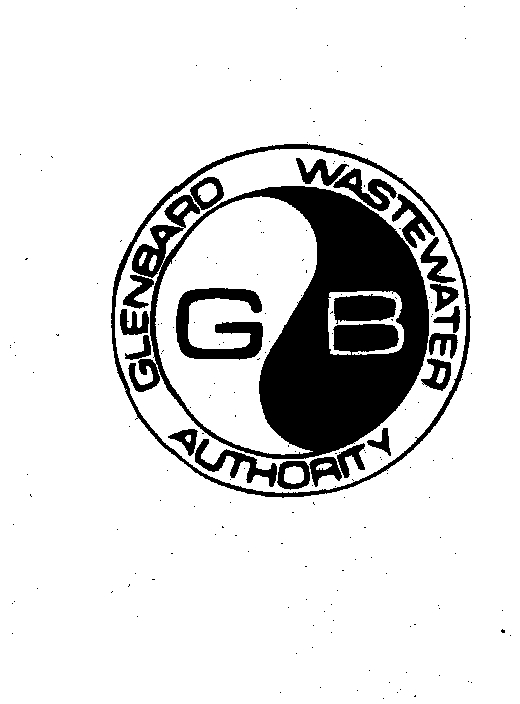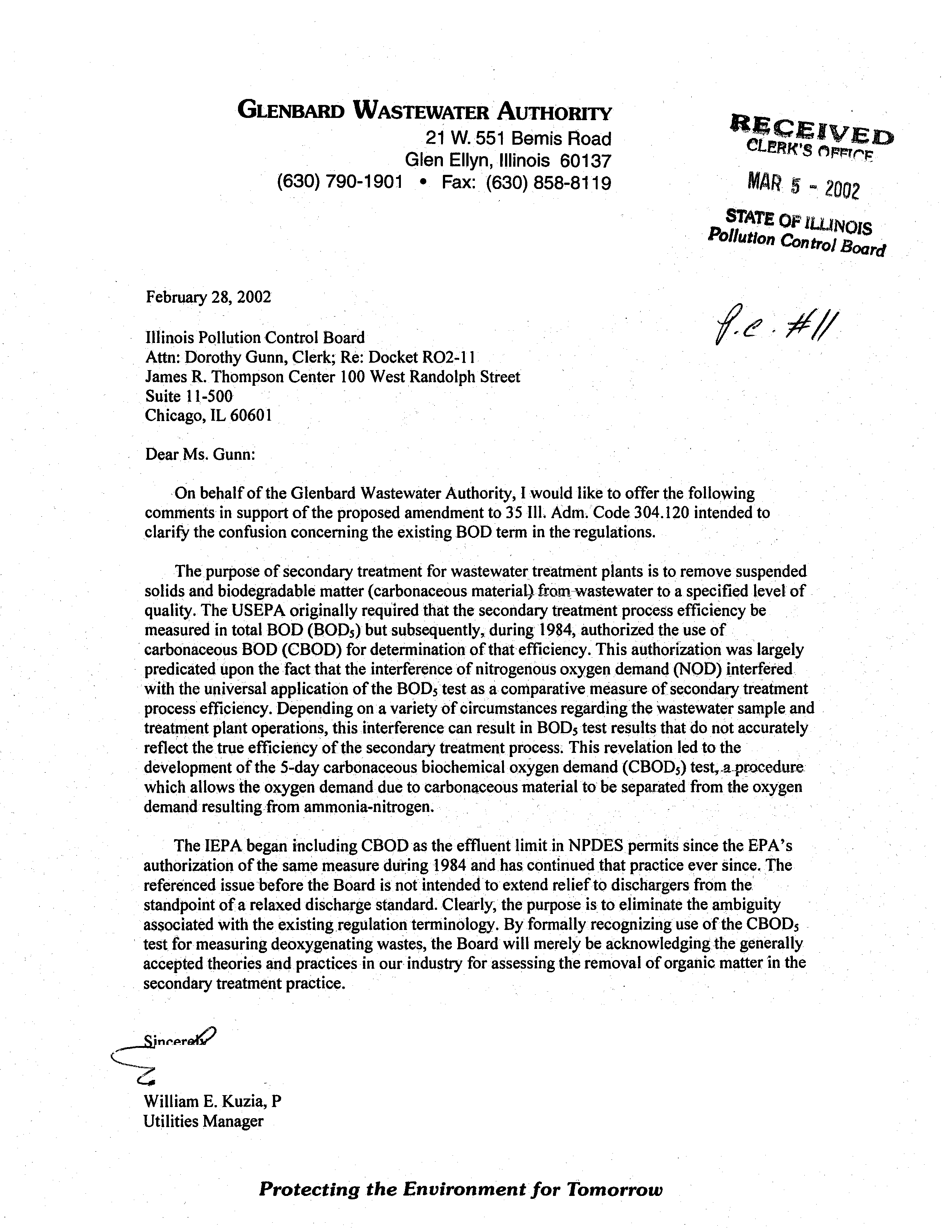GLENBARD
WASTEWATER AUTHORITY
21 W. 551 Bernis Road
Glen Ellyn, Illinois 60137
(630) 790-1901 • Fax: (630) 858-8119
February 28, 2002
Illinois Pollution Control Board
Attn Dorothy Gunn, Clerk, Re Docket R02-1 1
James R Thompson Center 100 West Randolph Street
Suite 11-500
Chicago, IL 60601
Dear Ms. Gunn:
eL~,cs~
MI~FI
5
2002
STATE
OFiLuIv~
Pollutj0,,
Cont,01 Board
On behalfofthe Glenbard Wastewater Authority, I would like to offer the following
comments in support ofthe proposed amendment to 35 III Adm Code 304 120 intended to
clarify the confusion concerning the existing BOD term in the regulations
The purpose ofsecondary treatment for wastewater treatment plants is to remove suspended
solids and biodegradable matter (carbonaceous material~from-~astewaterto a specified level of
quality The USEPA originally required that the secondary treatment process efficiency be
measured in total BOD (BOD5) but subsequently, during 1984, authorized the use of
carbonaceous BOD (CBOD) for determination ofthat efficiency This authorization was largely
predicated upon the fact that the interference ofnitrogenous oxygen demand (NOD) interfered
with the universal application ofthe BOD5 test as a comparative measure of secondarytreatment
process efficiency Depending on a variety ofcircumstances regardingthe wastewatersample and
treatment plant operations, this interference can result in BOD5 test results that do not accurately
reflect the true efficiency ofthe secondary treatment process This revelation led to the
development ofthe 5-day carbonaceous biochemical oxygen demand (CBOD5) test, a procedure
which allows the oxygen demand due to carbonaceous material to be separated from the oxygen
demand resulting from ammonia-nitrogen
The IEPA began including CBOD as the effluent limit in NPDES permits since the EPA’s
authorization ofthe same measure during 1984 and has continued that practice ever since The
referenced issue before the Board is not intended to extend relief to dischargers from the
standpoint ofa relaxed discharge standard Clearly, the purpose is to eliminate the ambiguity
testassociatedfor measuringwith
thedeoxygenatingexisting regulationwastes,terminologythe
Board
Bywillformallymerely
berecognizingacknowledginguse
ofthethegenerallyCBOD5
accepted theories and practices in our industry for assessing the removal oforganic matter in the
secondary treatment practice
c-~
C’
7
William E. Kuzia, P
Utilities Manager
Protecting the Environment for Tomorrow



